Cassia vs Ceylon Cinnamon: What is the Difference?
Cassia vs ceylon cinnamon. Did you know that there are different varieties of cinnamon?
Get the most out of your fall cooking by adding some good cinnamon to your baked goods. Not only will it taste warm and comforting, but you might also reap some of the health benefits!
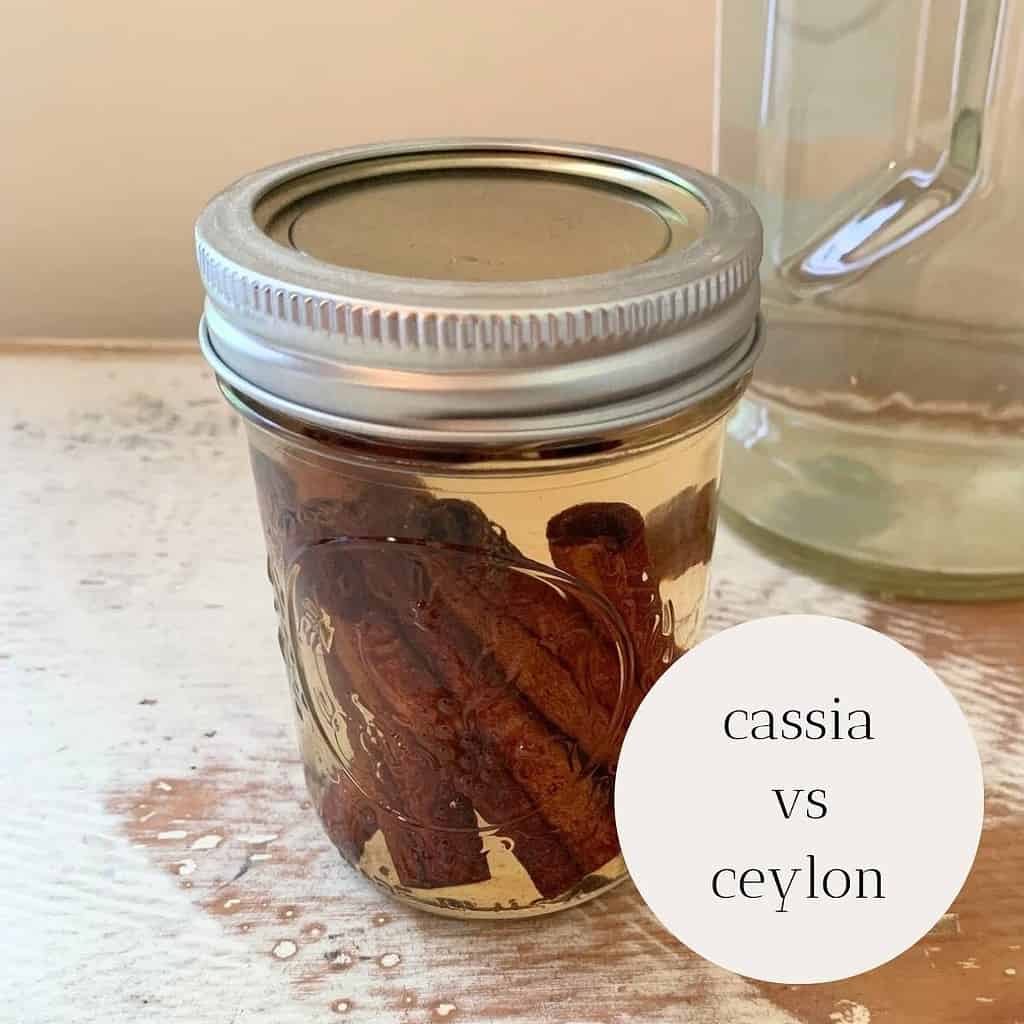
Did you know that there are different types of cinnamon?
Learn the difference and make your own cinnamon extract for delicious homemade baked goods, drinks, and alternative medicine! Grocery store extracts are often poor quality, have additional chemicals added, and are very expensive. But this homemade extract is healthy, easy, and cheap to make!
Cassia vs. Ceylon Cinnamon
Most of us are familiar with cinnamon. We usually buy it as ground cinnamon for recipes and baking, or as cinnamon sticks for decorative additions to drinks or for use in crafts. Cinnamon extract is less commonly used but still available in some grocery stores.
But cinnamon is more than a flavoring and decoration. And there is more than one type of cinnamon.
Note: Please do your own research and consult with your primary doctor if you are pregnant, nursing, or have other health conditions.
This post contains affiliate links, which means I make a small commission at no extra cost to you. Read my full disclosure here. Thanks for your support!
cassia vs. ceylon cinnamon – deep dive
Cinnamon has been used as a spice for thousands of years. It comes from the bark of various species of cinnamon trees.
The leaves, flowers, fruits, and roots of cinnamon trees have also been used in cooking and for medicinal purposes. But there are differences in the chemical composition of cinnamon products produced from different species or parts of cinnamon trees.
Cassia cinnamon and zeylanicum cinnamon are the main types of cinnamon but there are several other popular varieties including saigon cinnamon and korintje cinnamon.
Cinnamomum zeylanicum (also known as “Cinnamomum verum,” “true cinnamon,” “ceylon cinnamon,” and “real cinnamon”) is a tropical, evergreen tree that belongs to the Lauraceae family. It is native to Sri Lanka and India.
Cinnamomum cassia (also known as “Cinnamomum aromaticum,” “Chinese cinnamon,” and “Chinese cassia”) is another variety of cinnamon tree that belongs to the same family. It grows in southeastern Asia and is the most common type sold in North America, though it’s considered to be lower quality.
C. zeylanicum is considered to be better than C. cassia and the chemical properties and volatile oils in the two are completely different. However, both types have a long history of being used as a spice and traditional medicine in many countries.
Medicinal properties of cassia vs. ceylon cinnamon
Cassia and ceylon cinnamon varieties have key differences that you should be aware of including complex flavor differences, and different but numerous health benefits. The kind of cinnamon that you choose should factor in possible negative effects.
Medicinal properties of ceylon cinnamon leaves
The leaves of ceylon cinnamon have large amounts of the essential oil eugenol, which is an anesthetic (relieves pain), antiparasitic (kills and repels parasites), and powerful antiseptic (prevents the growth of disease-causing microorganisms).
When ingested, it improves digestion. When applied topically, it stimulates capillary dilation causing skin to redden, which relieves congestion and inflammation of deeper tissues.
Medicinal properties of ceylon cinnamon root bark
The root bark is high in camphor, which is slightly anesthetic, antipruritic (relieves itching), antiseptic, and has a cooling effect to lower body temperature and relieve thirst.
When ingested, it improves digestion, stimulates coronary and peripheral dilation, and stimulates the central nervous system and circulation. When applied topically, it stimulates capillary dilation, too.
Medicinal properties of ceylon cinnamon inner bark
The inner bark of ceylon cinnamon is the part most commonly used because the volatile oil cinnamaldehyde is strongest there. Here are all the medicinal properties:
| spasmolytic | relieves convulsions and spasmodic pain |
| carminative | improves digestion and relieves discomfort from flatulence and colic |
| stimulant | increases energy in the body |
| antimicrobial | kills and prevents the growth of disease-causing microorganisms |
| anthelmintic | expels and destroys parasitic worms in the gastrointestinal tract |
| astringent (mild) | contracts tissues and makes them more firm; reduces discharge |
Because of these medicinal properties, cinnamon is most commonly used to help treat these conditions:
- colds
- flu
- nausea
- vomiting
- digestive issues
In addition, cinnamon’s sweet and delicate flavor is often used to help cover other less-tasty medicinal herbs. It can also be used as dietary supplements for diabetes by evening out blood sugar levels, and helps improve irritable bowel syndrome and other gastrointestinal problems.
Recent research has also been done on the use of cinnamon against Alzheimer’s disease and other neurological diseases.
Medicinal properties of cassia cinnamon inner bark
Cassia cinnamon has a high amount of cinnamaldehyde, but it also contains high levels of coumarin, which is only available as trace amounts in ceylon cinnamon.
According to the medical journal PubMed Central, coumarins are commonly used in the treatment of prostate cancer, renal cell carcinoma, and leukemia. They also have the ability to counteract the side effects caused by radiotherapy.
However, the same journal notes that coumarin was classified as a toxic substance by the United States FDA (Food and Drug Administration) in 1954 because it triggered liver tumors and other liver damage in rats. As such, foods containing higher levels of coumarin have been banned.
Additionally, the National Institute for Occupational Safety and Health (NIOSH) has named coumarin as a chemical carcinogen in tests performed on rodents.
In most cases, consuming cassia cinnamon doesn’t provide enough coumarin content to cause significant problems. However, prolonged use and large quantities could be an issue for sensitive people, such as those with liver disease.
For this reason, I would avoid using cassia cinnamon sticks on a daily basis in your hot, holiday beverages if you have a history of liver problems.
Make your own ceylon cinnamon extract
All you need to make your own cinnamon extract is some ceylon cinnamon sticks, vodka, and a glass jar with lid.
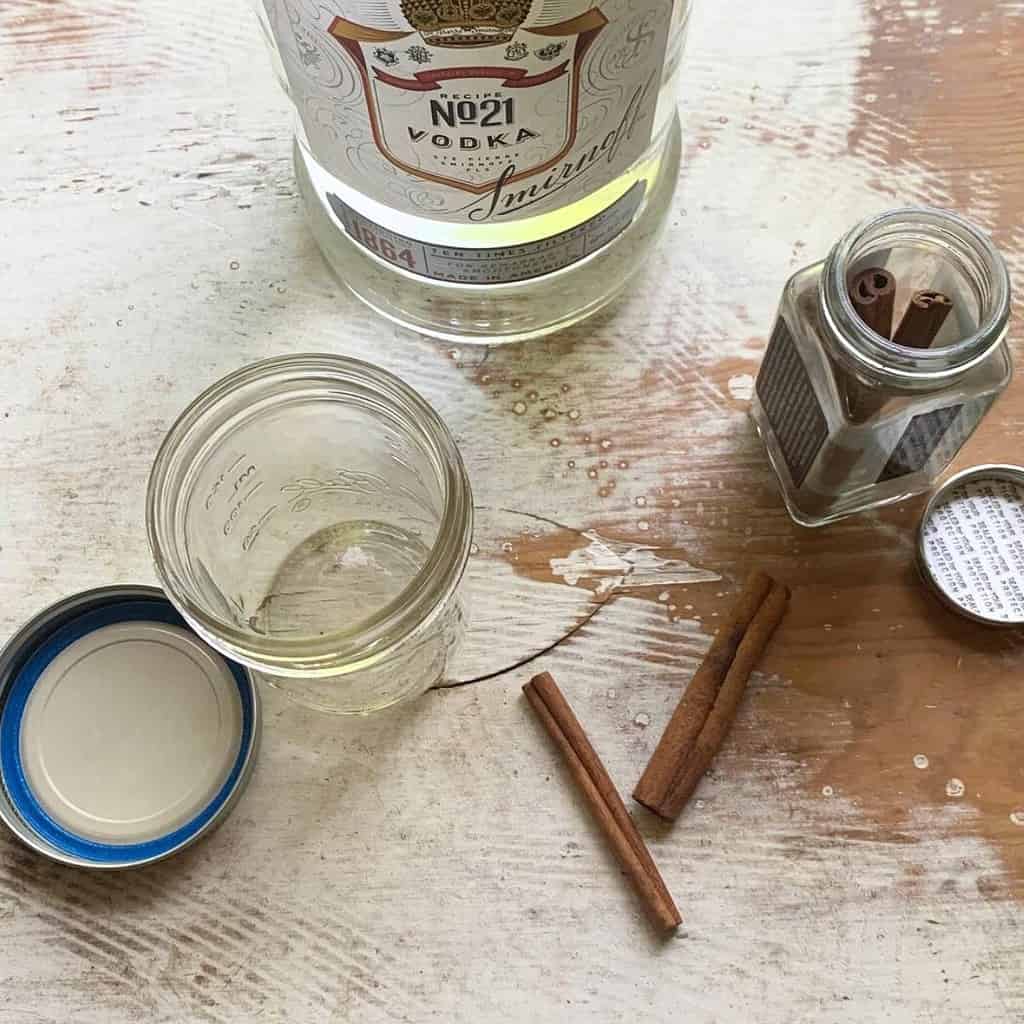
Put your cinnamon sticks inside your jar. I like to use half-pint mason jars but use what you have.
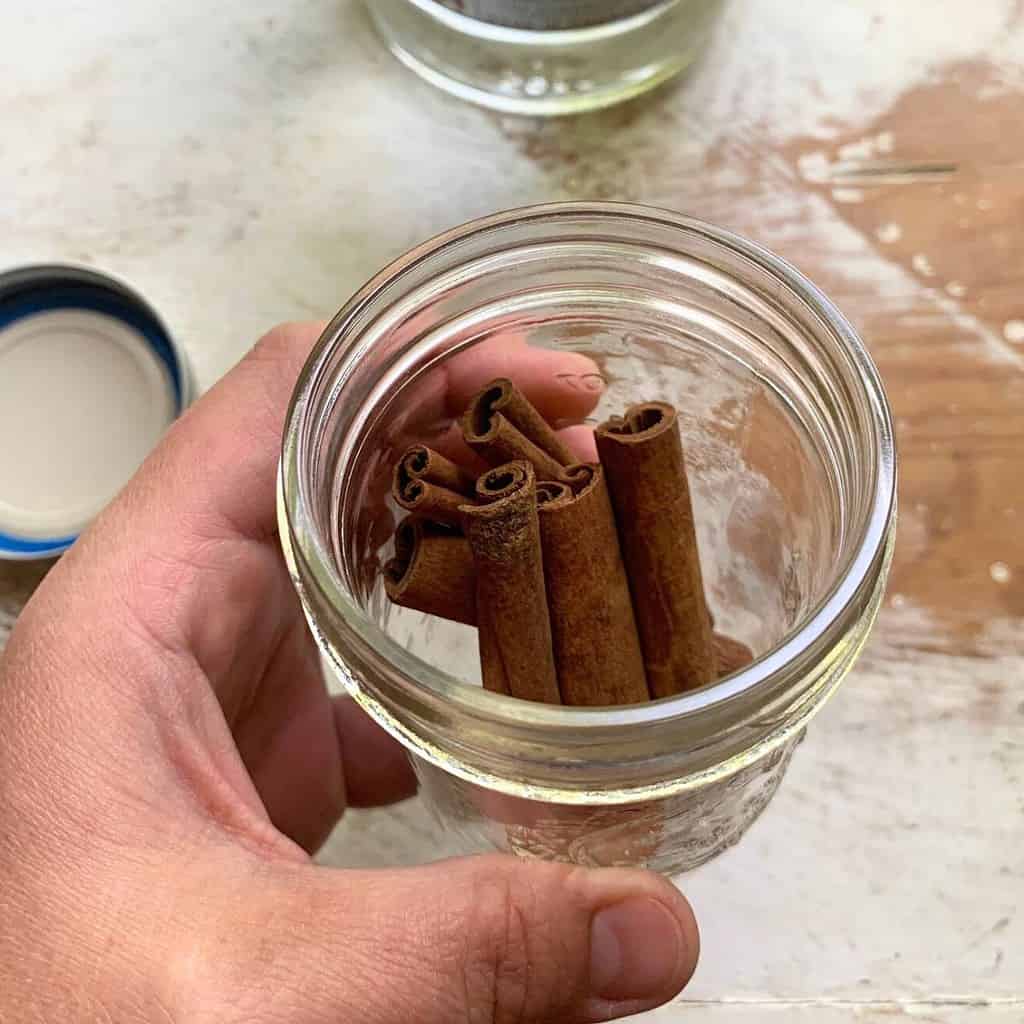
Pour vodka over the top of your cinnamon sticks. Leave about one inch of headspace at the top of the jar.
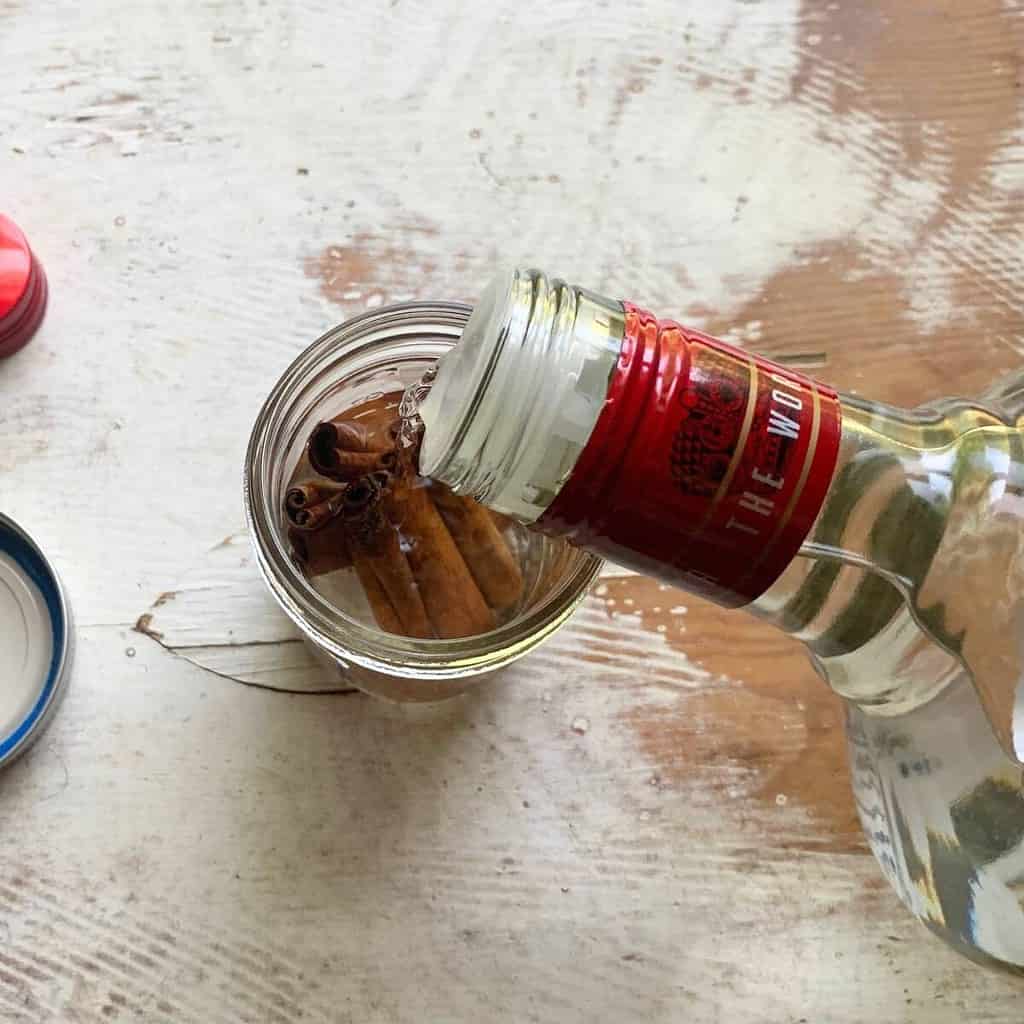
Add a tight-fitting lid and give your jar a couple of shakes.
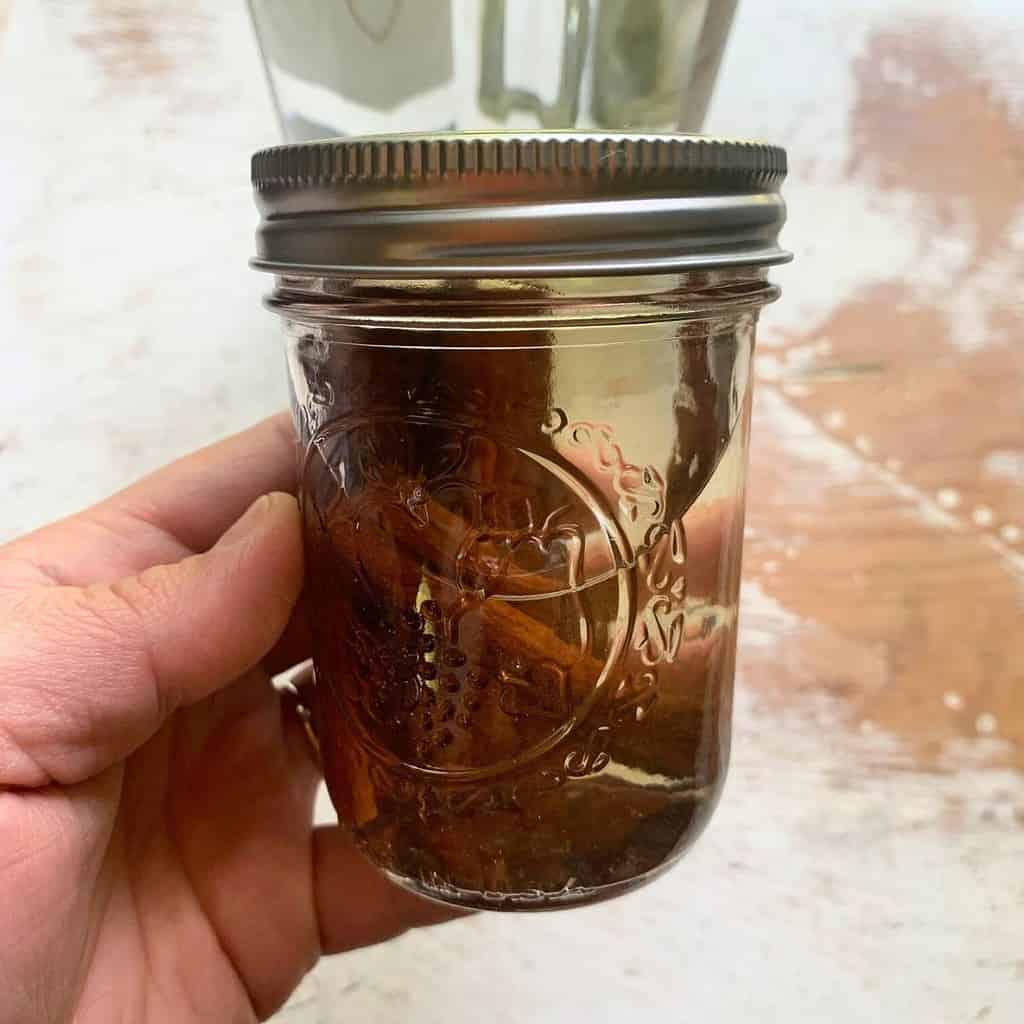
Store your extract in a cool, dark pantry out of direct sunlight. Shake your jar whenever you think of it but it doesn’t have to be done every day or even at all.
Let your extract steep for about 2 months and then check to see if you like it.
The extract will reach full maturity at 6 months but can be used sooner than that.
After your extract reaches the maturity level that you enjoy, strain out the cinnamon sticks and decant the extract into a separate glass bottle or jar. Then add more vodka to cover your old cinnamon sticks and start a new batch of extract going!
Recipe Card
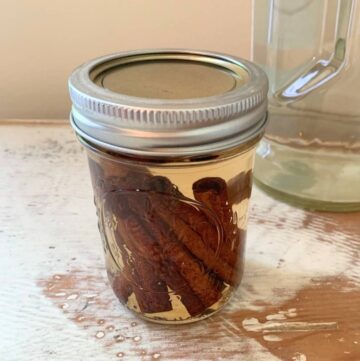
Ceylon Cinnamon Extract
Equipment
- glass half-pint mason jar with lid
Ingredients
- 6 ceylon cinnamon sticks
- 8 ounces 80-proof (40%) or higher vodka (Another option is to use 3 parts food grade vegetable glycerin and 1 part water.)
Instructions
- Put your cinnamon sticks into your mason jar and cover with vodka (or the vegetable glycerin/water mixture). Add the lid and shake your jar a few times.
- Shake your jar once per week when you remember, and let your extract steep for at least 2 months and then give it the smell and taste test to see if it's smells and tastes like cinnamon. It can be used right away at this point, but you can also let it steep up to 6 months when it reaches full maturity. (If you're making it using the glycerin/water mixture, your shelf life isn't going to last as long, so it's best to make this in small batches that you'll use and be sure to check it as you use it.)
- After 6 months, strain out the cinnamon sticks and decant the extract into a separate glass bottle or jar. Then add more vodka to cover your old cinnamon sticks and start a new batch of extract going! (Or, if you used glycerin/water, you should use fresh cinnamon sticks each time.)
What do you use cinnamon extract for?
You can use cinnamon extract for culinary delights, medicinal remedies (both oral and topical), to make your home more cozy and comforting! Here are some ideas to get you started.
I would use cinnamon extract in liquids when powdered cinnamon is not desirable. Use it to flavor coffee or warm apple juice when you feel a cold or flu coming on.
You can also add some cinnamon extract to a bath when you feel a cold or flu coming or use it for aromatherapy in a spray bottle diluted with water. I like to include cinnamon extract in my homemade room spray.
If you want to have a sweet smelling bathroom toilet paper, cinnamon extract is your answer! I add four drops of cinnamon extract to the inside of the cardboard toilet paper rolls. When you or your guest goes to use the paper, they’ll get a sweet whiff of cinnamon! (Of course, this can also be done with other homemade extracts, too.)
Cinnamon extract can also be used in homemade salves and balms when you want your remedies to have aromatic, astringent, and antimicrobial qualities.
I do my best to research available information but consult your doctor and do your own research. Cinnamon enhances other herbs in a prescription.
How long does homemade cinnamon extract last?
Homemade cinnamon extract can last several years as long as it is made and stored properly. For best results, make cinnamon extract with high quality vodka that is at least 40% alcohol and high quality cinnamon sticks.
Once the extract is finished and it smells good to you, store your finished extract in a glass bottle out of direct sunlight.
How do you make cinnamon extract without alcohol?
If you prefer not to use alcohol, you can make cinnamon extract by combining equal parts food-grade vegetable glycerin and distilled water, and adding cinnamon bark.
Keep in mind that vegetable glycerin has a sweet flavor, so your recipes may not turn out how you expect.
However, if you’re preparing cinnamon extract for medicinal purposes, the sweet flavor of glycerin-based tinctures are better tolerated by children.
As a side note, you can make this extract/tincture by using warmed apple cider vinegar. The taste will change because of the vinegar flavor, so you won’t want to use it in drinks or for baking. But it will still have some of the medicinal benefits as the alcoholic version. I wrote a post on how to make apple scrap vinegar if you’d like to try it out.
Rosemary Gladstar mentions a trick in her book Herbal Recipes for Vibrant Health for how to decrease the amount of alcohol in tinctures for those who are sensitive. You can decrease the alcohol content by half if you put the finished tincture into a pot of boiling water for 1 to 2 minutes. Half the alcohol will burn off!
What alcohol is best for cinnamon extract?
Vodka with 40% to 50% alcohol (80 to 100 proof) is best for making cinnamon extract to be used in cooking. The flavorless vodka won’t interfere with the cinnamon flavor. However, medicinally, you can choose to use other spirits that are 80 to 100 proof like gin and brandy.
Shop This Post!
Herbal Recipes for Vibrant Health, by Rosemary Gladstar
Materia Medica of Western Herbs, by Carole Fisher
Ceylon Cinnamon Powder, organic
Ceylon Cinnamon Sticks, organic
Ball Quilted Crystal Jelly Jars (Case of 12)
Pin This For Later!

Other Related Posts
Make Your Own Apple Vinegar from Scraps

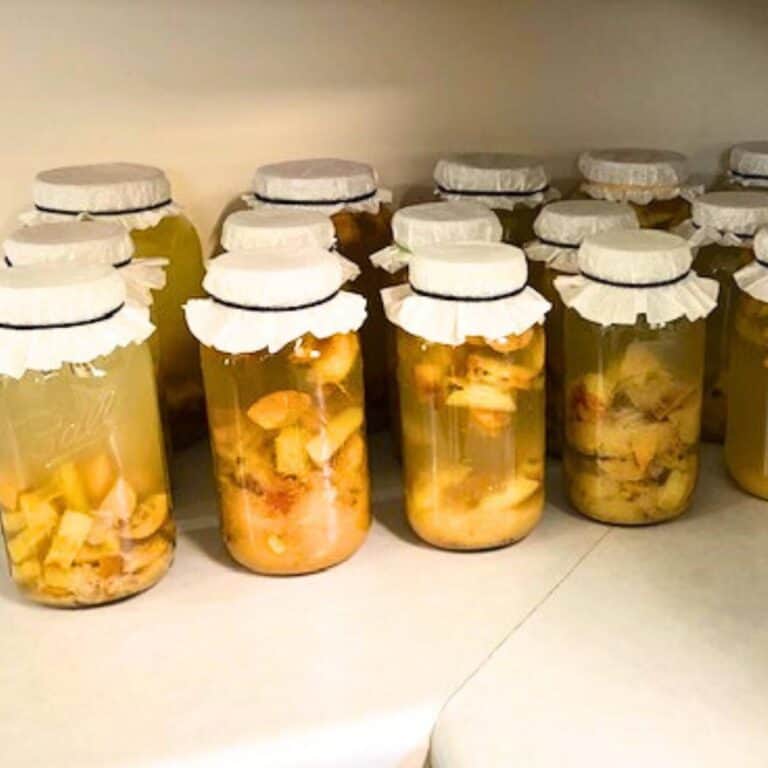
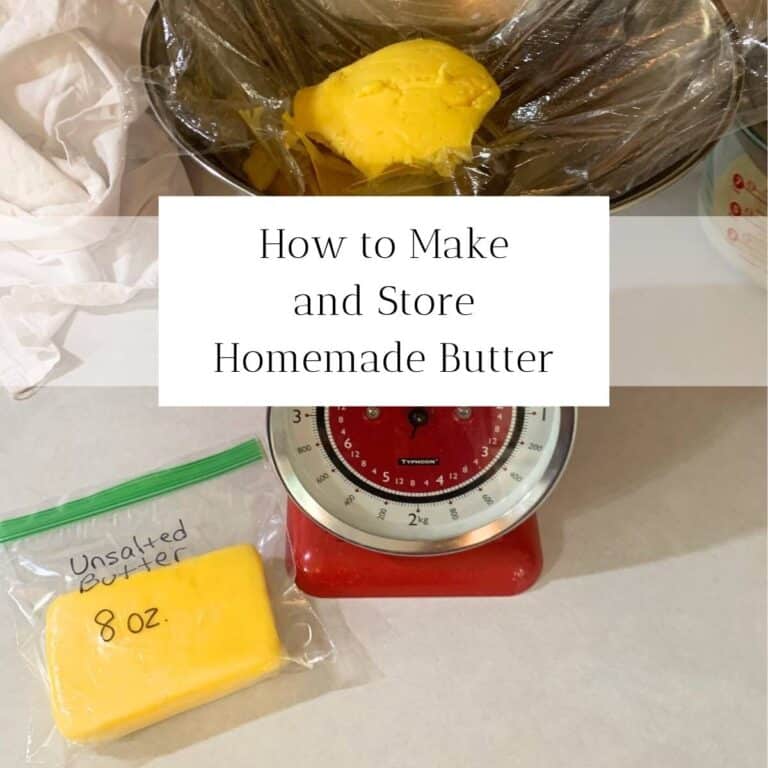
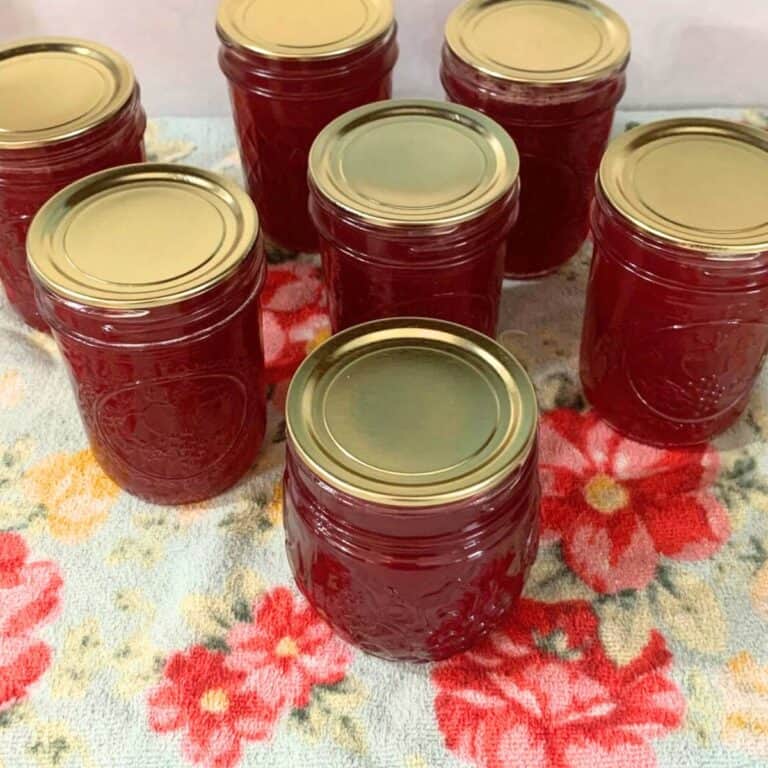
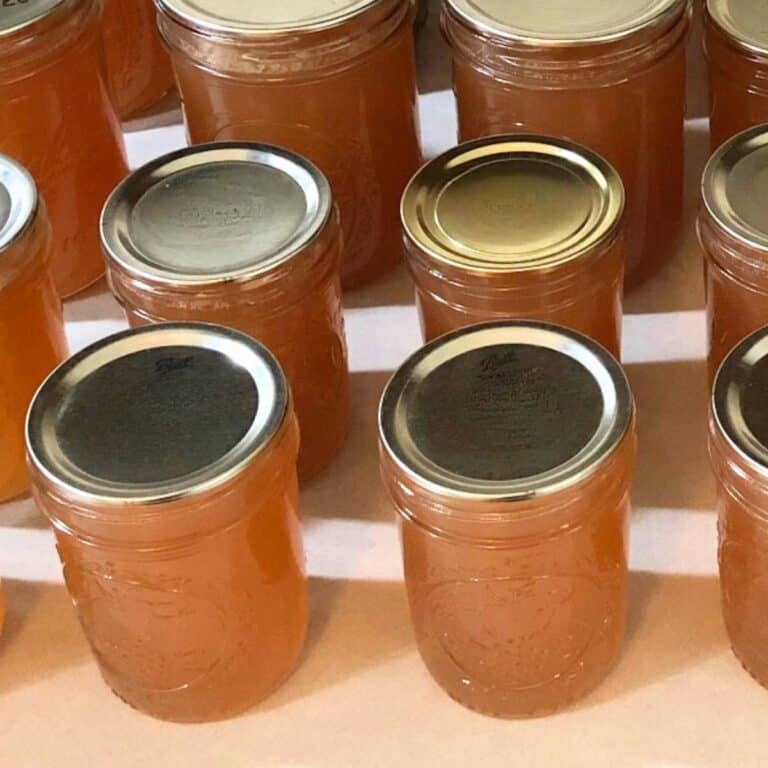


Ooo I’ve not thought of cinnamon extract before! My hubby would love that! Will definitely be making this, thank you!
This is so informational and so helpful! I have been hearing more about Ceylon Cinnamon but have yet to try! Will definitely be adding this to my cabinet!
I love all of the information! I didn’t know it was so simple to make cinnamon extract. Thank you for sharing!!
Wow, so much great information! I’m craving a warm, spicy drink now! 🙂
This is fascinating! I didn’t realize there could be such a difference in types of cinnamon. I’m also encouraged to make my own extract now. Thanks for sharing!
I love that you’re talking about this because I was actually wanting to start other extracting and I know another popular one in the vanilla group I’m in is Cinnamon extract! I honestly never even thought about it, such great information! Thank you!
That is so neat! I’ve never heard about a vanilla group before; I’ll have to look it up!